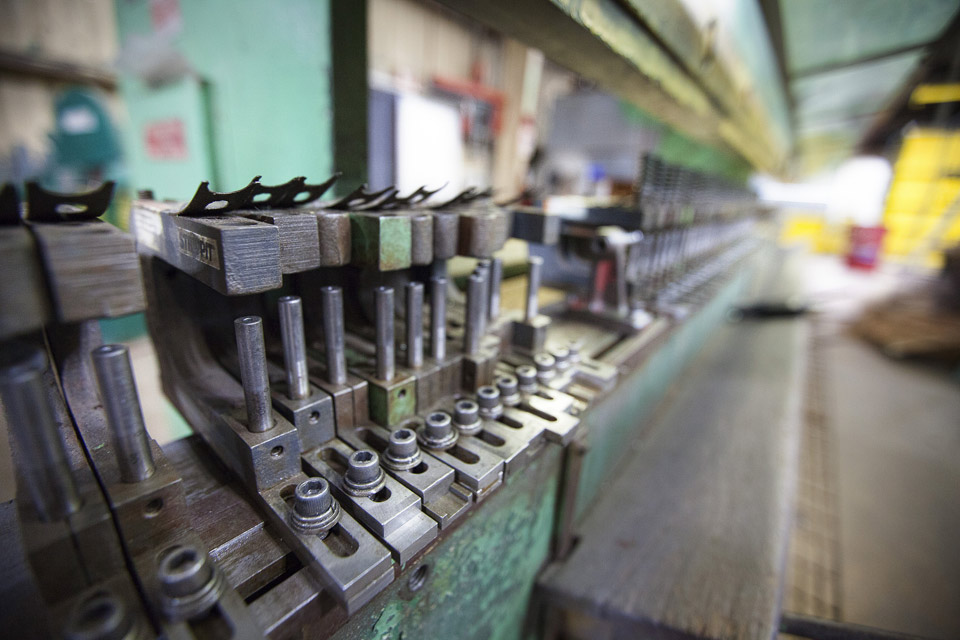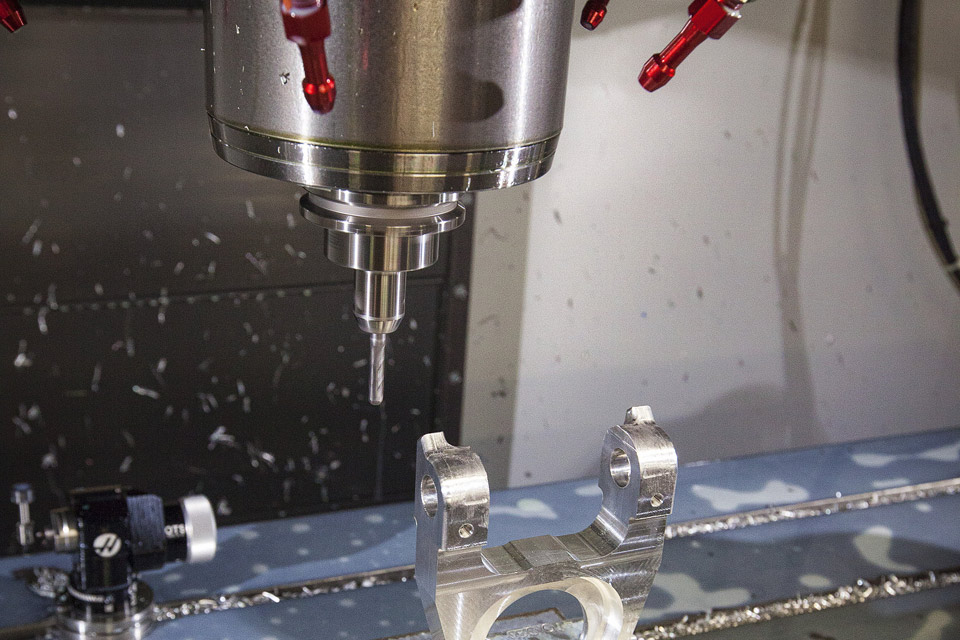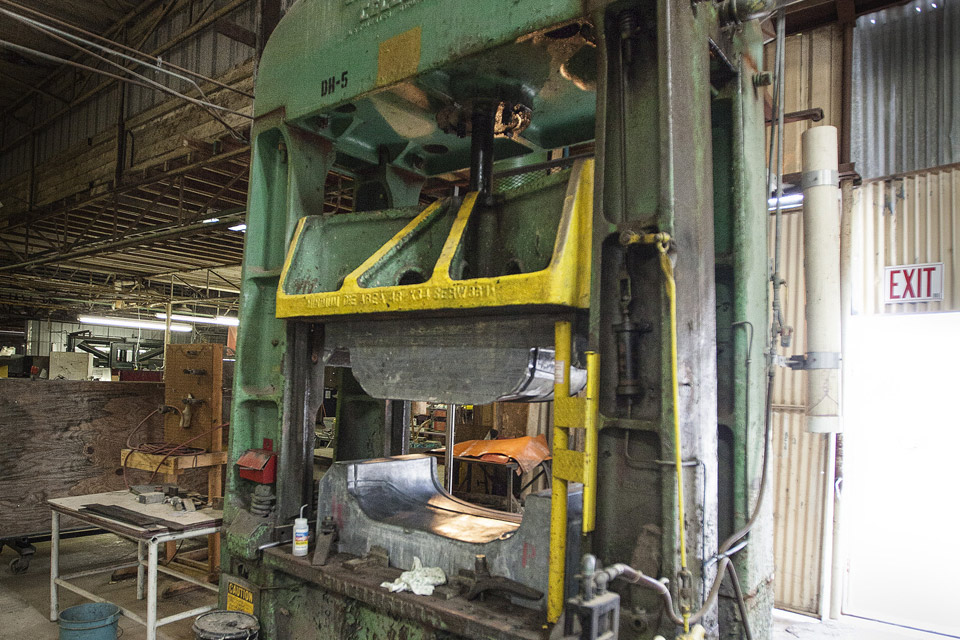A year after awakening from a self-imposed, multiyear “hibernation,” the Mooney factory in rural Kerrville, Texas, is once again cranking out some of the world’s fastest FAA-certificated piston singles.
The sprawling, maze-like facility with 230,000 square feet of indoor space has a new coat of paint, modern equipment, and the parking lot is brimming with employees’ full-size pickups. Red and black Mooney crests look down from the peaks of the buildings, and a huge American flag is draped from the factory ceiling.
Below it, 135 employees convert raw material at one end into sleek, all-metal, four-seat M20s—both the Acclaim and Ovation models—that roll out ready to fly at the other end. About 60 percent of the workforce is made up of Mooney veterans, and the rest are new to the legendary manufacturer whose boom-and-bust saga would better fit the west Texas oil fields than the central Texas hill country where the factory is located.
Mooney International is now owned by the Meijing Group, a Chinese real estate conglomerate that has spent $6 million modernizing the Kerrville factory and installing state-of-the-art manufacturing equipment. Mooney International CEO Jerry Chen, a California-based aeronautical engineer, has vowed that the Kerrville factory will continue producing Acclaims and Ovations. A pair of two-seat, diesel-powered models (the M10J and the M10T) will be designed in California and manufactured in China.
“We’re making long-term investments in Kerrville, and we just signed a 30-year lease,” Chen said. “What you see now is only the beginning. We’re gradually modernizing and increasing capacity to serve a worldwide market that’s just starting to develop.”
Chen’s commitment to the Kerrville factory, its employees, and the M20 product line is gratifying to Mooney workers, many of whom have been through multiple ownership changes, layoffs, and bankruptcies. But they are drawn back by the deep ties formed in 1953 when brothers Al and Art Mooney brought aircraft manufacturing to this region.
“The DNA of this factory, the workforce, and the airplanes produced here are inseparable,” said Tom Bowen, Mooney’s chief operating officer, who joined the company in 1992 as an engineer and test pilot and returned last year. “It would be impossible to re-create the skill and dedication of this workforce anywhere else in the world.”
There are no obvious signs of Chinese ownership at the Kerrville factory, although some of Mooney’s top managers have made multiple trips to Asia to evaluate M10 manufacturing sites and the nascent general aviation market there. Bowen said Mooney’s promise of a vibrant future—and not nostalgia for its storied past—convinced him to come back to Texas.
“I’ve seen our business plan, and I know it can work,” Bowen said. “We’ve always had a great product, an extremely talented workforce, and fanatical customers. Now we’ve finally got the right plan and the resources to execute.”
Pervasive history
There’s a pervasive sense of history at the Mooney factory, where the 11,000 aircraft built have left their mark—literally. An outline of a wooden wing spar is permanently etched into the cement floor, an accidental remnant of excess glue that dripped from a jig over a period of years and slowly ate into the floor below. Company officials keep it as a nod to Mooney’s origins.
In the main factory building, LED lights have replaced florescent bulbs; walls and floors are freshly painted; and CNC machines, water-jet cutters, and chemical treatments have replaced outdated stamps, presses, and saltwater tubs that seem to belong in a museum of industry. The aging metal roof is soon to be replaced, and other cracks in the concrete floor are being permanently repaired, not just patched.
A half-dozen M20s fill the assembly line, their unpainted aluminum skins gleaming in the sunlight. It takes 20 work days to produce each one, and Mooney officials expect to deliver up to 25 new aircraft this year.
All current Acclaims and Ovations share the same basic airframe, and both are equipped with Continental IO-550 engines and Garmin G1000 avionics suites. The main difference is that Acclaims are turbo-normalized and Ovations are normally aspirated. (The Acclaim has a retail price of $699,000 and the Ovation is $649,000.)
One of each was finished and awaiting a final FAA airworthiness sign-off on the day AOPA visited. Company officials expect FAA permission to license their own airplanes in the near future.
It’s quite a turnabout from the company’s comatose years that began when the previous owners slashed their workforce from 460 people in 2008 to just nine two years later. For the next five years, raccoons and opossums far outnumbered employees in the vacuous factory, and some workers literally carried golf clubs to swing at critters in the darkened buildings.
Robert Collier, a former U.S. Navy pilot who joined Mooney in 1995, is one of the few who remained on the skeleton crew. Workers answered phones, fulfilled parts orders, lubricated the machinery, and jumped through the bureaucratic hoops required to maintain Mooney’s FAA type and production certificates. Bizarrely, that meant keeping records on environmental and manufacturing committee meetings and documenting ongoing safety training. The FAA acted out its part in this charade with regular factory visits and audits, even though absolutely no manufacturing activity was taking place.
Collier said workers on the skeleton crew did their best to serve customers and keep each other’s spirits up. And their Alice-in-Wonderland paperwork drills were essential to Mooney’s revival. “If we had lost our production or type certificate, that could have been the end,” he said. “Those certificates have a great deal of value.”
Pretty remarkable
Sleek and aerodynamically clean, Mooneys have long been known for a unique combination of speed and fuel efficiency—as well as distinctive, straight-up vertical stabilizers. They’re also exceptionally tight- handling airplanes that incorporate pushrod controls instead of cables, and they’re stout. The main wing spar is a single metal piece that stretches from tip to tip, and formed skins provide phenomenal strength. The passenger compartment is a reinforced cage that offers a great deal of crash protection.
In the air, Mooneys tend to be heavier in roll than pitch, and they require strict adherence to proper final approach speeds. If flown too fast on final approach, they’ll float endlessly in ground effect.
The newest model, the Ovation 3, increases power output to 310 horsepower (from 280) by raising propeller/engine rpm. That change brings correspondingly shorter takeoff rolls and higher rates of climb. Mooneys are all about speed, however, and the Ovation 3 tops the magical 200-knot indicated airspeed figure—a number that earns bragging rights.
There were six partially complete aircraft on the assembly line when Mooney shut down production in 2010. Now, those airframes all have been completed and delivered. Every aspect of each new aircraft going forward was done under the new regime, and company officials say the quality, performance, and handling qualities of the totally new aircraft have never been better.
“When you look at the progress we’ve made in the last 12 months, it’s hard not to be impressed,” Bowen said. “Things never go as quickly as we’d like, but when you look at how far we’ve come in the last year, it’s pretty remarkable.”
The best chance
Stephen Sherman is a “comeback” employee who has been hired at Kerrville four separate times since his first stint began in 1979. This is not uncommon among his peers.
Republic Steel owned the company when Sherman started, and Mooney was producing 10 airplanes a week (J and K models) at that time. Then it was sold to a French firm, and an economic downturn in the early 1980s led to the first in a series of bankruptcies and layoffs.
Sherman went to work for a nearby service center that specializes in upgrading and repairing used Mooneys.
“That was a really good experience because I saw firsthand how durable these airplanes are, and what they’re like to service in the field,” he said. “I also got to work directly with Mooney owners and saw the kinds of upgrades they value, and how much they flat-out love the product.”
Sherman’s long but oft-interrupted tenure at Mooney included its collaboration with Porsche in the 1980s when German engineers designed and tested a converted automotive engine that included innovations such as electronic ignition and a single power lever.
He said Mooney has always had a close-knit and cohesive workforce. “A lot of the people I started with are still here,” Sherman said, “and there are new faces, too. There’s a family feel to the place.”
Some credit the Mooney brothers for creating that atmosphere, and others say it’s a trait of the people from this part of Texas.
“The people of the Hill Country define the Mooney culture,” Sherman said. “We’ve always taken a lot of pride in our craftsmanship and our work ethic. That’s true of those of us who have been here a long time, and you can see it in the new hires, too.”
Today, Sherman develops and tests new Mooney products, and he says the company has a clear direction that was absent before.
“These guys have a plan—and we hadn’t heard the P-word around here in years,” he said. “There’s a real commitment on the part of the owners, and there’s seriousness to the way they’re going about things. This is the best chance we’ve had in a very long time.”
Loyal following
Mooney has had a loyal following, but bankruptcies, production slowdowns and stoppages, and uncertainty about the future availability of parts and support has tried their patience. Also, the company’s product line is incredibly narrow. Mooney currently offers just one airframe, one avionics suite, and one engine—so the main choice buyers make is turbonormalized, or not. (Air conditioning and a known-icing TKS system also are options.)
The pool of potential new Mooney buyers is comprised almost exclusively of experienced pilots (retractable, glass panel, IFR) who value speed, efficiency, technology, and refinement—and have the ability to pay for it. A new Mooney costs less than a new Bonanza G36, its longtime nemesis in the single-engine, retractable, standard-category piston market, but Mooneys also have two fewer seats. The company also faces stiff competition from fixed-gear challengers such as the Cirrus SR22 and Cessna TTx, which appeal to the same customer base.
Mooney officials regard used Mooneys as their stiffest competition, and for good reason. The depression in used aircraft prices makes existing aircraft look like bargains. When you’re selling to pilots who value efficiency, it’s hard to beat used models that sell for half (or less) the price of factory-new airplanes and can fly just as far, and just about as fast. For these and other reasons, Mooney is banking on overseas markets. China is paramount, but Mooney is also pursuing sales in Europe and Latin America.
“The M20 is our flagship, and it’s got a very loyal following among pilots who have a practical use for them,” Chen said. “As [aviation] barriers continue to fall in Asia and elsewhere, more businesses and individuals will find practical use for the airplanes we produce in Kerrville.”
Email [email protected]
Mooney moves
1929: Albert and Arthur Mooney start the company in Wichita, Kansas
1930: Bankruptcy
1946: Production stars on single-seat Mooney Mite (M-18)
1955: Production starts on four-seat M-20
1967: Start production of the M-10 Cadet
1971 to 1973: Aircraft production stops
1974: M-20 production resumes under new owner, Republic Steel Corp.
1984: Merges with French firm Alexander Couvelaire
2001: Bankruptcy
2002: Assets purchased by Advanced Aerodynamics and Structures, which forms the Mooney Aerospace Group
2004: Bankruptcy. Assets purchased by Allen Holding Finance
2008: New aircraft production slows amid deep layoffs
2010: New aircraft production stops and the company enters “hibernation”
2013: Soaring American Corp. buys Mooney with backing from the Meijing Group of China
2014: M-20 production resumes
2014: M10T and M10J models announced with FAA certification expected in 2017.















